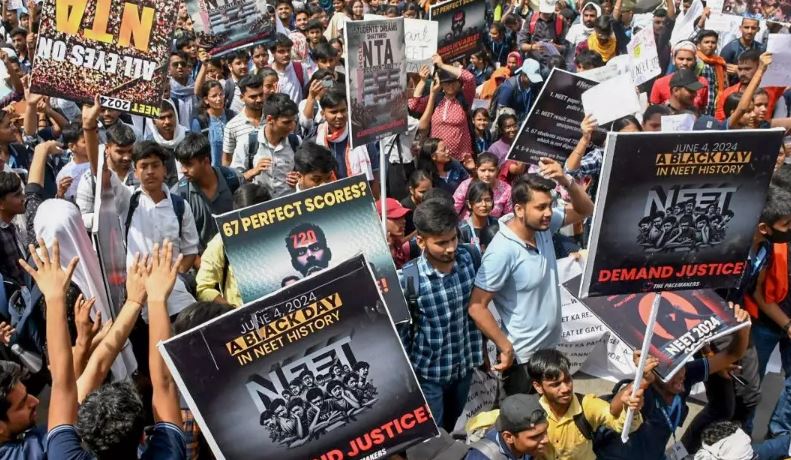The NEET Conundrum
Since its inception, NEET has remained a polarizing force in India’s medical education landscape, designed ostensibly to standardize admissions and curb commercialization. Yet, its journey has been fraught with controversy and criticism, particularly concerning its impact on accessibility and fairness.
A National Debate
NEET emerged as a response to disparities in medical college admissions, aiming to replace myriad state-level exams with a unified, merit-based entrance test. Initially celebrated for its potential to democratize access to medical education, NEET’s implementation has faced significant pushback from states like Tamil Nadu, citing concerns over its compatibility with regional education systems and social equity objectives.
Economic Hurdles and Inequities
The financial burden associated with NEET preparation underscores deeper inequities. Candidates, often from economically disadvantaged backgrounds, face substantial costs for coaching and application fees, exacerbating socio-economic disparities in access to medical education. Despite high scores, many aspirants find themselves excluded from coveted seats due to financial constraints.
Diverse Experiments, Mixed Results
Tamil Nadu’s historical approach, emphasizing higher secondary marks over entrance exams, underscores an ongoing debate about the efficacy of standardized tests in assessing diverse educational backgrounds. The state’s alternative models advocate for inclusivity and regional autonomy in educational policy, challenging NEET’s uniform applicability across India’s diverse educational landscape.
A Shift Towards Privatization
The evolution of India’s medical education sector reflects broader shifts towards privatization and public-private partnerships, raising concerns about the commodification of healthcare and the influence of profit motives in shaping medical education policies.
Comparative Insights and International Models
Comparing NEET with international counterparts like the UCAT (UK) and MCAT (US) reveals stark contrasts in admission criteria and educational outcomes. While NEET prioritizes high school pass rates, international exams emphasize rigorous academic preparation and aptitude testing, highlighting differing philosophies in assessing medical aspirants’ readiness.
Calls for Reform
Critics argue that NEET’s current structure overlooks contextual nuances and socio-cultural diversity, advocating for a multi-dimensional assessment model that incorporates academic performance over multiple years, alongside general aptitude tests. Such reforms aim to mitigate the adverse effects of a single-point assessment system on diverse student populations.
Conclusion: Toward Inclusive Educational Policies
In conclusion, the NEET debate transcends mere educational policy; it intersects with issues of social equity, federalism, and the commodification of healthcare. As stakeholders debate its future, India stands at a crossroads, tasked with balancing meritocracy with inclusivity in medical education.
Summary Table:
| Key Learning Points |
|---|
| Economic barriers in NEET preparation |
| Impact on regional educational autonomy |
| Comparisons with international medical entrance exams |
| Proposed reforms for inclusive admissions |

Sunil Garnayak is an expert in Indian news with extensive knowledge of the nation’s political, social, and economic landscape and international relations. With years of experience in journalism, Sunil delivers in-depth analysis and accurate reporting that keeps readers informed about the latest developments in India. His commitment to factual accuracy and nuanced storytelling ensures that his articles provide valuable insights into the country’s most pressing issues.



